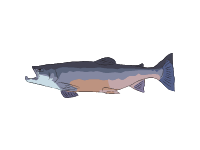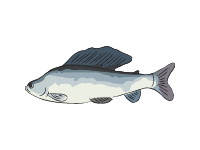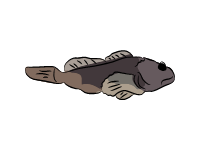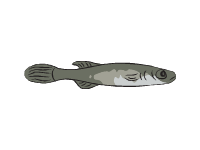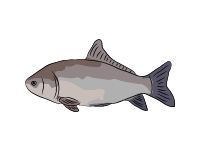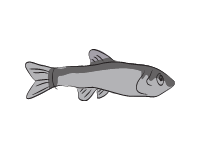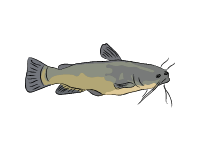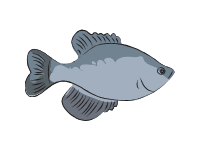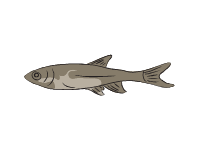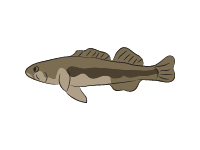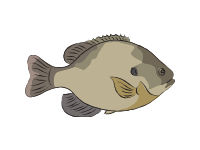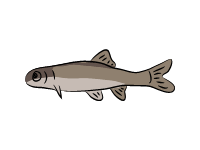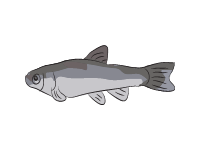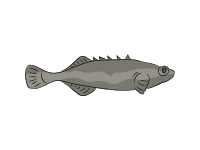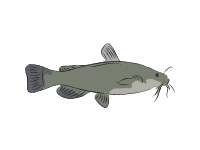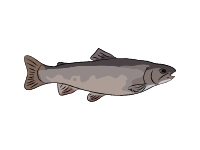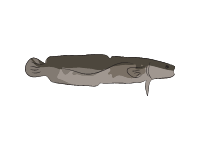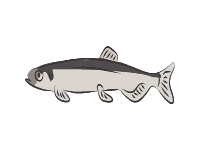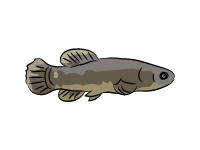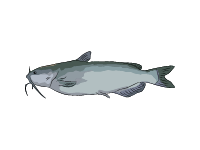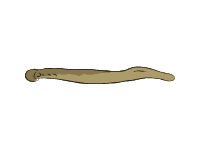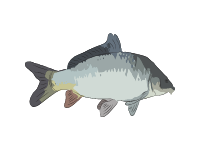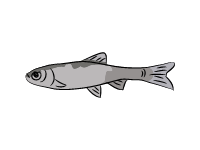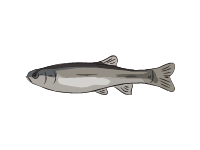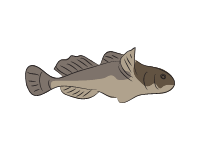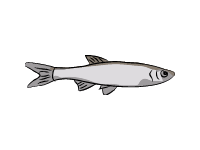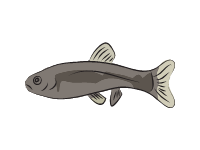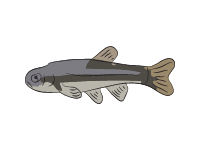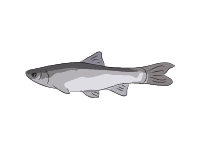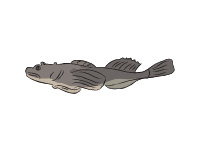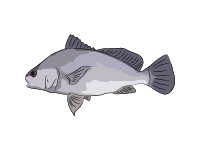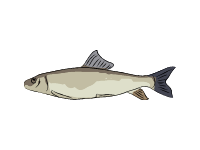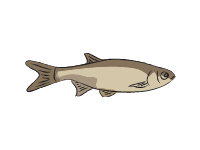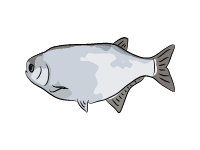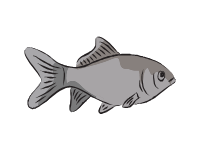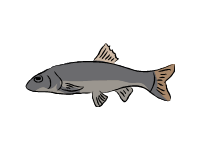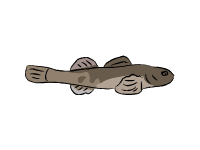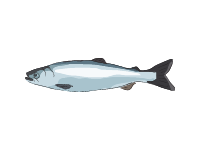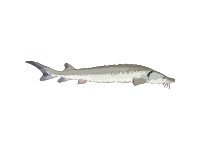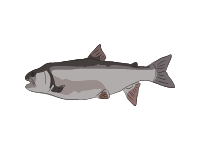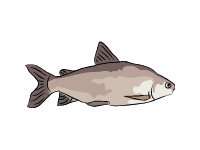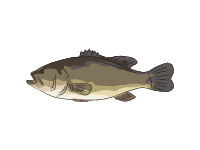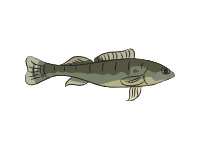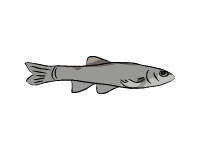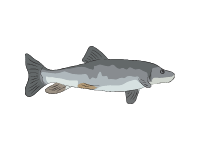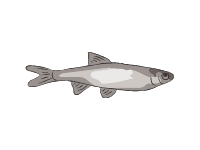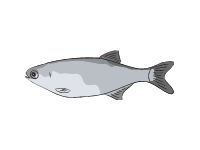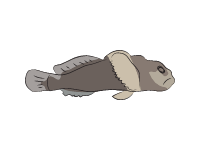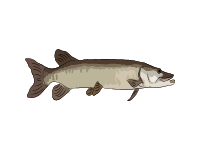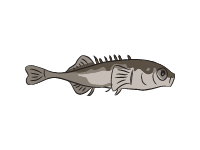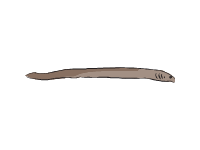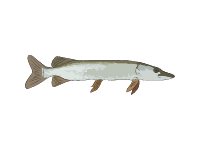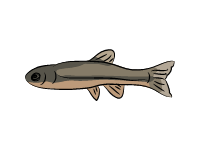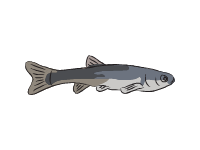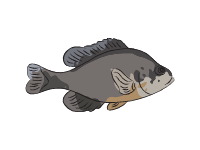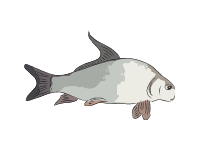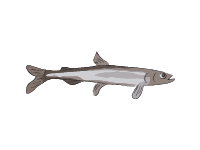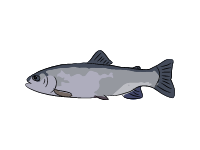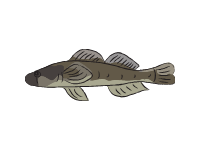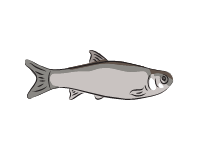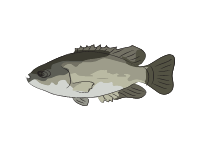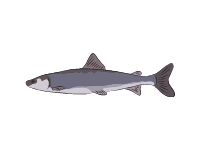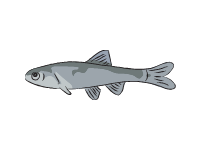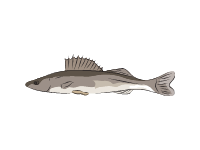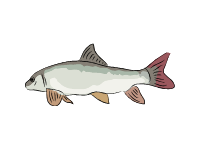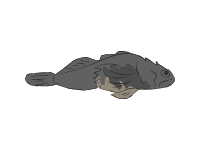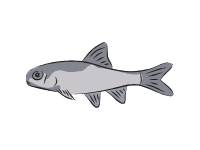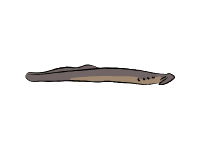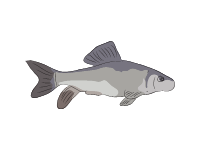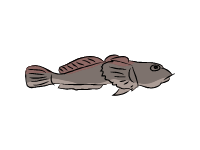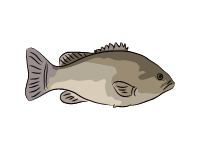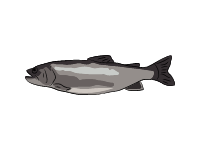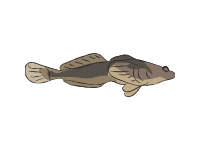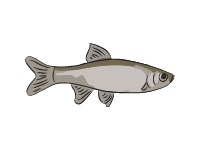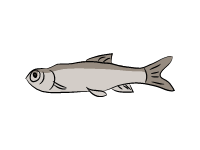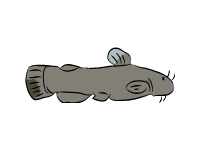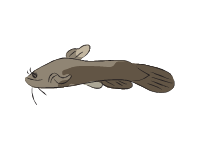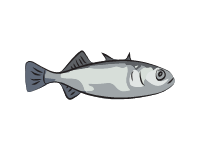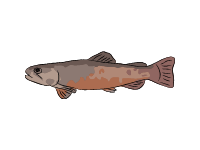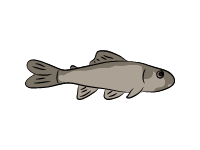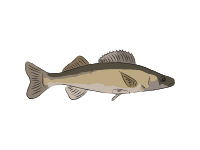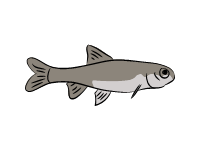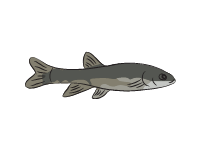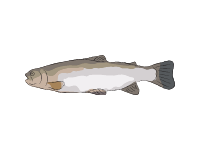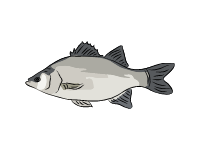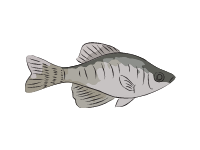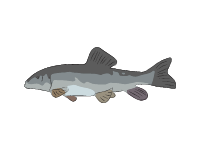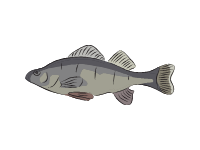The bigmouth buffalo (Ictiobus cyprinellus) is a fish native to North America, and it is in decline. It is the largest North American species in the Catostomidae or 'sucker' family, and is one of the longest-lived and latest-maturing freshwater fishes, capable of living beyond 110 years and reproducing infrequently.It is commonly called the gourdhead, marblehead, redmouth buffalo, buffalofish, bernard buffalo, roundhead, or brown buffalo. The bigmouth buffalo is not a carp, nor is any other fish in the sucker family. Although they share the same order, each belong to different suborders and are native to separate continents.
The bigmouth buffalo is typically a brownish olive color with dusky fins, but can vary greatly in color across individuals. Like other catostomids it has a long dorsal fin, but unlike all others it has a terminal (forward-facing) mouth reflecting its unique, pelagic feeding ecology. It is the largest of the buffalo fish and can reach a length of more than 4 ft (1.2 m) and 65 lb (29 kg) in weight. Generally, it lives in sluggish areas of large rivers and in lakes. Bigmouth buffalo populations have been in decline in the northern extent of their range since the 1970s, including parts of Minnesota, North Dakota, and Canada.A 2019 study documented their late maturity, centenarian longevity, and that several populations in northwestern Minnesota are comprised mainly (85-90%) of individuals more than 80 years old, indicating recruitment failure since the 1930s. These life history attributes, including the ability to survive decades with virtually no successful recruitment (i.e. periodic recruitment), are shared by other long-lived freshwater fishes, including sturgeon.Such species require time to successfully sustain themselves, surviving to periods in which favorable environmental conditions arise that allow for booms in reproduction and subsequent recruitment.Management of bigmouth buffalo is thus in urgent need of reevaluation, at least in the northern part of their US range where populations are already declining;there are no limits on harvest, and night bowfishing was recently legalized, allowing a new and growing form of exploitation. The bigmouth buffalo has a rather unique, pelagic ecology of shallow-water systems. The larval bigmouths are pelagic and sometimes benthic feeders of copepods and cladocerans mostly, but also eat phytoplankton and chironothemids. Bigmouth buffalo, unlike its close relatives the black and smallmouth buffalos, is a pelagic filter-feeder, using its very fine gill rakers to strain zooplankton from the water. It sometimes feeds near the bottom, using short up-and down movements to filter from the water the animals that hover near the bottom or rest lightly on it. The juveniles and adults are mostly limnetic plankton feeders that also eat cladocera, copepods, algae, Chironomidae, ostracods, and other insect larvae and invertebrates depending on availability. The optimum habitat for spawning bigmouth buffalo is highly vegetated waters. They are a very resilient fish that can tolerate high turbidity and low oxygen levels. They can be found in waters with turbidity levels over 100 ppm. A minimum total dissolved solids is 200 ppm during the growing season. During spring and summer, 50–75% pools should be present, with backwaters, and marsh areas and 25-75% littoral area and protected embayments during summer for the habitat to be suitable. Bigmouth can be found in waters from 22.5–38.0 °C, but their preferred temperature is between 31 and 34 °C. The optimal temperatures for incubation and hatching of eggs are from 15-18 °C, but they can develop in temperatures reaching up to 26.7 °C. The bigmouth prefers slow-moving water that does not reach a velocity over 30 cm/s. Salinity can be a problem for reproduction. Spawning can occur from 1.4-2.0 ppt of salinity which eggs and yearlings not being able to survive a salinity of over 9 ppt. The minimum dissolved oxygen during the spring and summer is 5 mg/l.
